Taking A Look Back: The 2016 NASCAR Season Review
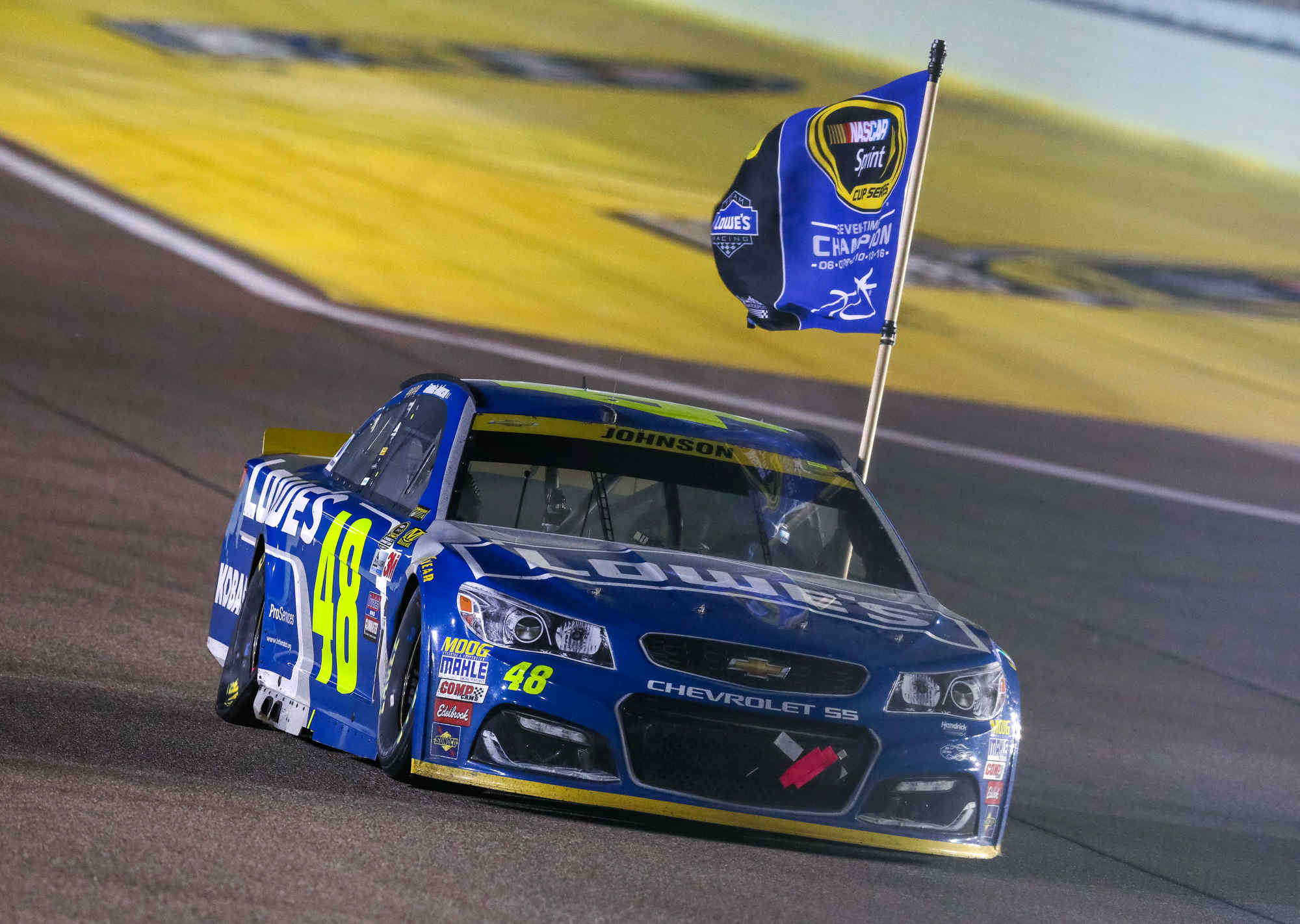 |
| Jimmie Johnson won an historic seventh championship in the season-finale at Homestead |
As the saying goes – "All good things must end", and as we put another successful NASCAR season into the record books, AutoRacing1.com revisits some of the highlights, the lowlights, the best races, the best drivers and some big changes that made up the 2016 NASCAR Sprint Cup Season. From Jimmie Johnson's historic championship run to Tony Stewart's final ride into the sunset, here s a look back at the stories that made our list.
BIGGEST MOMENT: JIMMIE JOHNSON'S SEVENTH CHAMPIONSHIP
The Sprint Cup Series season-finale at Homestead-Miami Speedway was NASCAR's biggest night to shine with the last round of the Chase for the Sprint Cup- a winner-take-all-event to finish out the season with four drivers all vying to take home what would the last Sprint Cup.
Four drivers. Jimmie Johnson, Kyle Busch, Carl Edwards and Joey Logano.
Two looking to become first-time champions; one looking to become a repeat champion; and one looking to make history.
NASCAR envisioned the final race of the Chase to be dramatic. Exciting. They couldn't have asked for anything better.
All four drivers put on their best performance of the season, keeping themselves in a position to win.
But after a late-race crash that took out Edwards and all but eliminated Logano, Jimmie Johnson raced to victory to score an historic seventh title – tying NASCAR Hall of Famers Richard Petty and Dale Earnhardt for the most all-time.
It was exactly the grand finale NASCAR was hoping for, and the perfect way to end the season.
DRIVER OF THE YEAR: MARTIN TRUEX, JR.
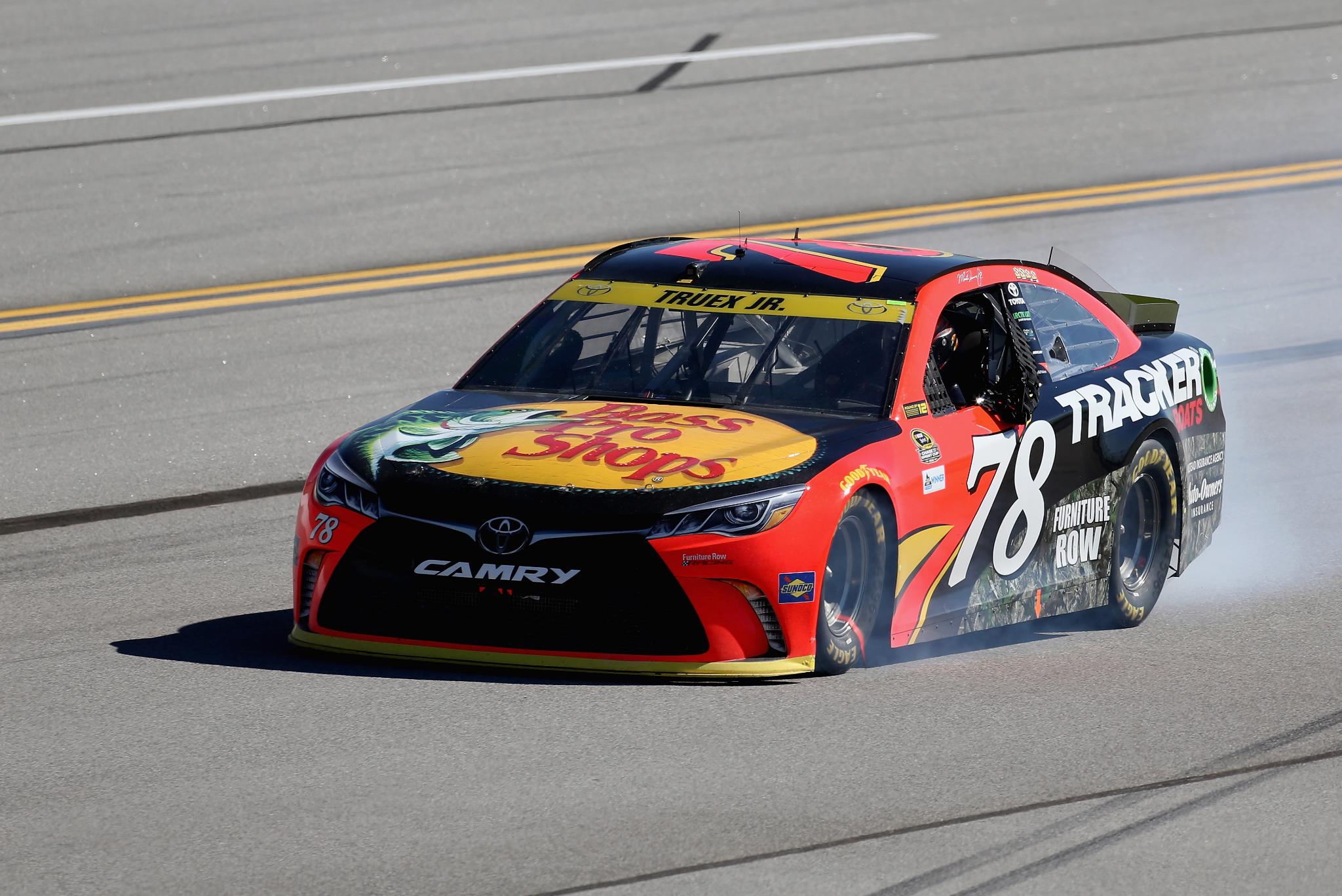 |
| A blown engine at Talladega ended Truex Jr.'s championship hopes |
Sure, winning seven championships is a tremendous accomplishment, but let's face it – Jimmie Johnson's run to the championship in 2016 was more of being in the right place at the right time – a good restart at Atlanta, a timely caution at Martinsville, dodging the wreck at Homestead.
When you look at the season as a whole, one team stands out as the best – Martin Truex, Jr. and the Furniture Row racing team.
Since moving to the Toyota camp at the end of the 2015 campaign and essentially becoming a fifth team for Joe Gibbs Racing, the FRR race team came out firing on all cylinders with a runner-up finish at Daytona.
But it wasn't all sunshine and roses for the Furniture Row Racing team. If there was any failing for Truex and his team, it was that their luck just plain sucked. Anything that could go wrong, did: a loose wheel at Bristol and Richmond; a crash at California; a broken shifter at Loudon; a blown tire at Pocono.
Truex tried to take it all in stride – "We'll get 'em next week" is the old saying. But in the Chase, there is no "next week" and after a blown engine at Talladega in the second leg of the Chase, Truex was out of the title hunt.
Although they could never seem to shake their bad luck, Truex was a threat to win every week. Had luck swung their way, this team very likely could have made a run for the title.
MOST IMPROVED DRIVER: KYLE LARSON
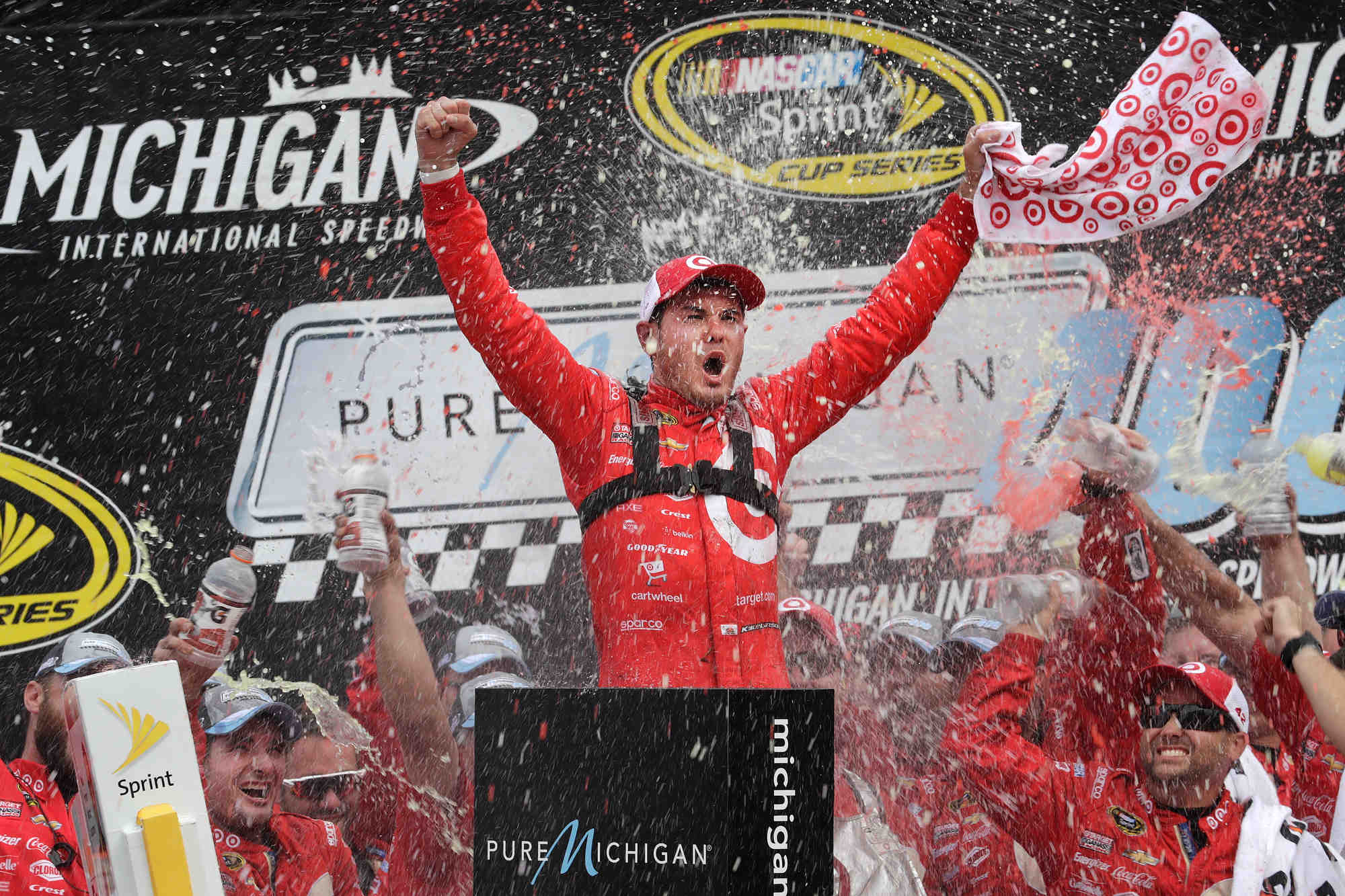 |
| Kyle Larson celebrates his first-career Sprint Cup victory at Michigan |
It wasn't too long ago that Kyle Larson was getting praise from the likes of Jeff Gordon and Tony Stewart and was being labeled as being the next great NASCAR superstar.
But despite a stand-out rookie year, Larson had failed to deliver on the "superstar" prediction. His sophomore season was a disappointment with only a pair of top-fives to show for his efforts.
NASCAR being the performance-based business that it is, some wondered if Larson was going to be able to live up to the hype, or just wind up another name in a long list of "would've been, should've been" drivers.
Larson vowed to step it up in 2016, but just a few weeks in it was the same 'ol Larson, with just a single top 10 in the season-opening Daytona 500.
Finally, a quarter of the way into the season, Larson finally started to shine through. Buoyed by a third-place finish at Martinsville earlier in the season, Larson nearly pulled off a win at Dover in May, then came home with a third-place finish a month later t Michigan.
At Michigan in August, Larson finally broke through for his first Sprint Cup victory – kicking off a streak of three straight top-five finishes and earning his first entry into the Chase.
Unfortunately, Larson didn't make it very far in the title hunt and got booted in the first round, but he continued to show improvement with three top-five finishes in the final seven races including a runner-up to Jimmie Johnson in the season-finale at Homestead.
It might not have been the a championship-winning year for Larson, but it was still a season to be proud of.
RACE OF THE YEAR: THE DAYTONA 500
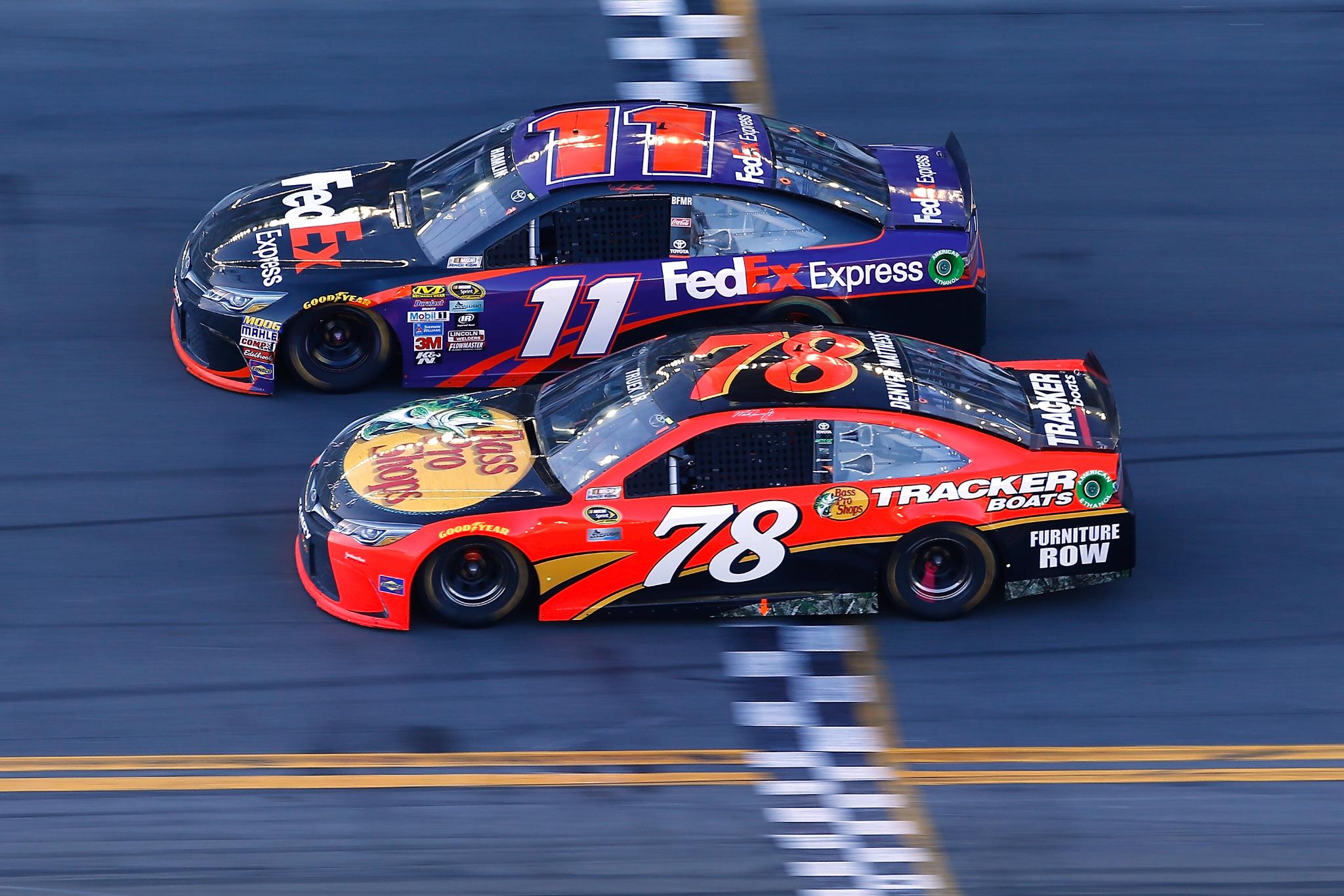 |
| Denny Hamlin (11) edges Martin Truex, Jr. (78) to win the 2016 Daytona 500 |
| Jonathan Ferrey/Getty Images |
The season-opening "Great American Race" has always been one of NASCAR's crown-jewel events – the "Super Bowl" of motorsports. But in recent years, it's become more of a 200-mph parade lap punctuated by an occasional multi-car crash and the guy in the lead with five laps to go was usually the guy who took the checkered flag.
Ho-hum, NASCAR fans said.
So, every few years, NASCAR tries tinkering with the aerodynamics and horsepower of the cars to try to make the race'well, more of a race than a 43-car train.
For the 2016 Daytona 500, NASCAR again had the cars dialed in with less horsepower, and again they got what they expected – a three-wide chariot race that amazingly only claimed 10 cars. It was, surprisingly, an exciting race.
In the end, it all came down to a last-lap pass for the lead with Denny Hamlin barely edging Truex, Jr. in the closest finish in Daytona 500 history, and the first last-lap pass since 2008.
Ho-hum no more.
RACE OF THE YEAR, Honorable Mention: Toyota / Save Mart 350 at Sonoma Raceway
 |
| Tony Stewart wins at Sonoma |
| Ezra Shaw/Getty Images |
Each track NASCAR visits has a unique aspect to it, and what it takes to win at each track varies depending on what kind of track you're dealing with. Superspeedways takes horsepower, intermediate tracks take aerodynamics, short tracks take a lot of bumping and braking.
Then there are road courses – which not only require all of the above but also require something else – driver finesse.
You can try to bull rush your way through a road course, but you won't get very far if you can wrestle a stock car through the hairpins. You can have the best motor in the field, but you won't make it to the end if you oversteer through the chicane.
No, road courses are a different breed of track. Drivers who have excelled at road courses often come from an open-wheel background, drivers like Tony Stewart.
Having missed the first eight races of the season after injuring his back in the off-season, Stewart was already behind the eight-ball headed into the middle part of the season, and the end of his Sprint Cup career looming on the horizon, what he wanted most for Christmas in July was a victory to get him into the Chase.
[adinserter name="GOOGLE AD"]Stewart hovered around the top 15 for much of the race before a timely caution helped push him to the lead with 22 laps to go.
Once out in front, Stewart put his road-racing prowess in full display, holding off Truex and Hamlin up until the final lap, where Hamlin managed to get around Stewart.
Seeing his only chance for a Chase berth slipping through his finger, Stewart poured it on and closed back in on Hamlin, and dived to the inside coming through the hairpin turn 11. The two made contact as Hamlin locked the front wheels trying to make the turn, fishtailing into the outside wall as Stewart powered back out in front and across the stripe the victory.
Stewart's win at Sonoma will likely go down as his final Cup Series victory, and he did in a way that only Stewart could.
STORY OF THE YEAR: DALE EARNHARDT JR.'S CONCUSSION
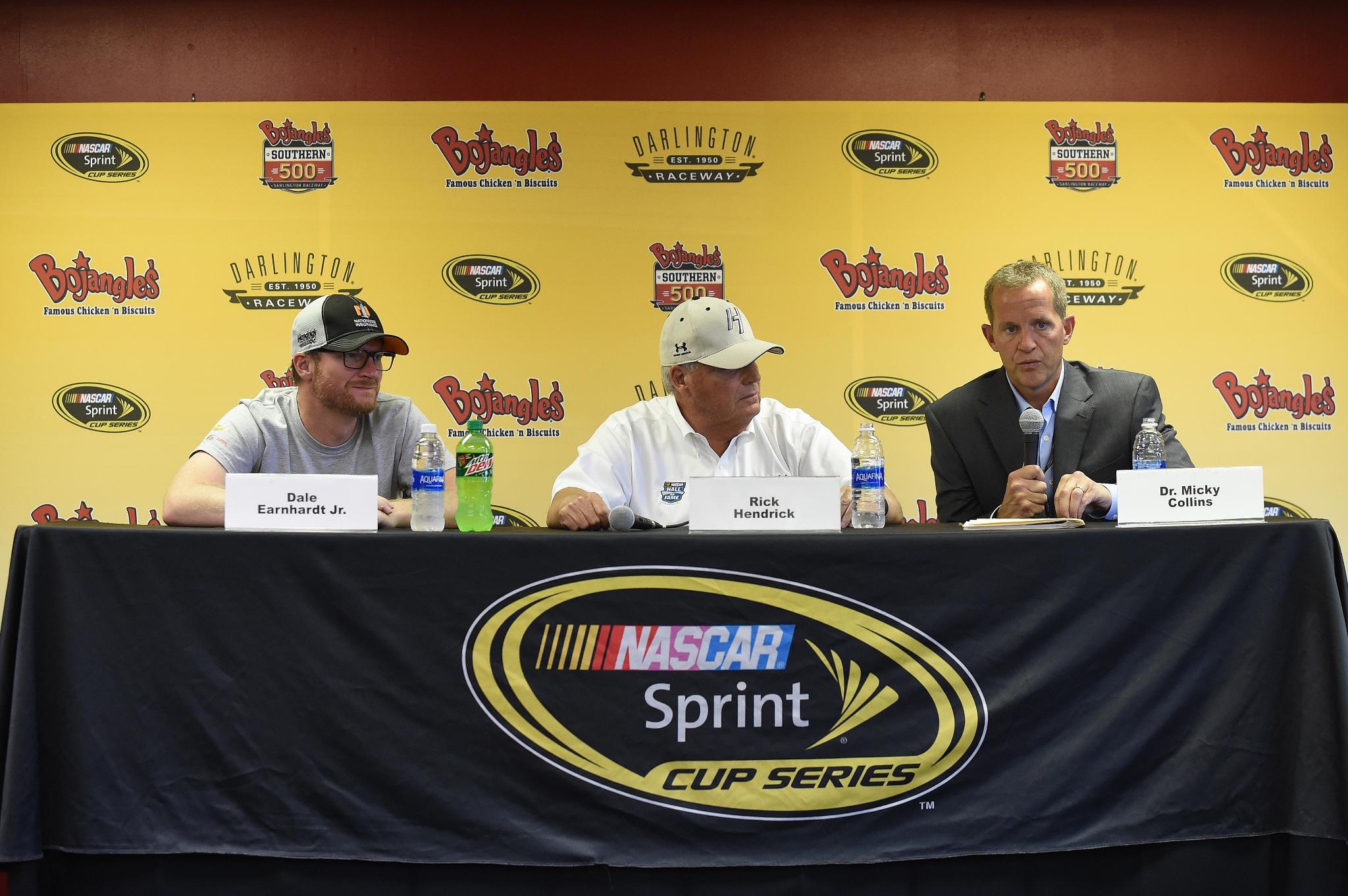 |
| Dale Earnhardt Jr. speaks to the media at Darlington |
| Jeff Curry/NASCAR via Getty Images |
Putting aside for the moment that Earnhardt, Jr.'s concussion cost him a shot at running the Sprint Cup title in 2016, the fact that this was Junior's third major concussion – and a career-threatening one, at that – served as a wake-up call for the entire NASCAR community. In all of the major North American sports, head injuries have been at the forefront, with many implementing new protocols for diagnosing potential concussions on the field in real time. Players are now no longer allowed to just "walk it off" and sit out a few plays – specialists now make that determination after an on-field examination.
NASCAR drivers have always been a different breed when it comes to injuries. Drivers like Ricky Rudd and the late Davey Allison simply taped their broken arms to the steering wheel and headed back out on the track. It became the norm o see a driver climb from their wrecked machine, wave to the crowd, and tell the media "we'll get 'em next week".
Some of Earnhardt Jr.'s prior concussions had gone undiagnosed because there were no physiological examinations required for drivers before getting behind the wheel. But two years ago, NASCAR finally stepped up, mandating physicals and base-line psychological testing for all drivers.
After suffering a concussion back in July, Earnhardt took himself out of the car – not NASCAR. It was bold step that really drove home just how serious a concussion can be, and how it should be taken seriously when it comes to a driver's health.
The very fact NASCAR's reigning 14-time Most Popular Driver missed half the season after suffering an injury that has become all too common in professional sports, really made the NASCAR community stand up and notice. As they should.
SAD GOODBYE'S: THE SPRINT CUP
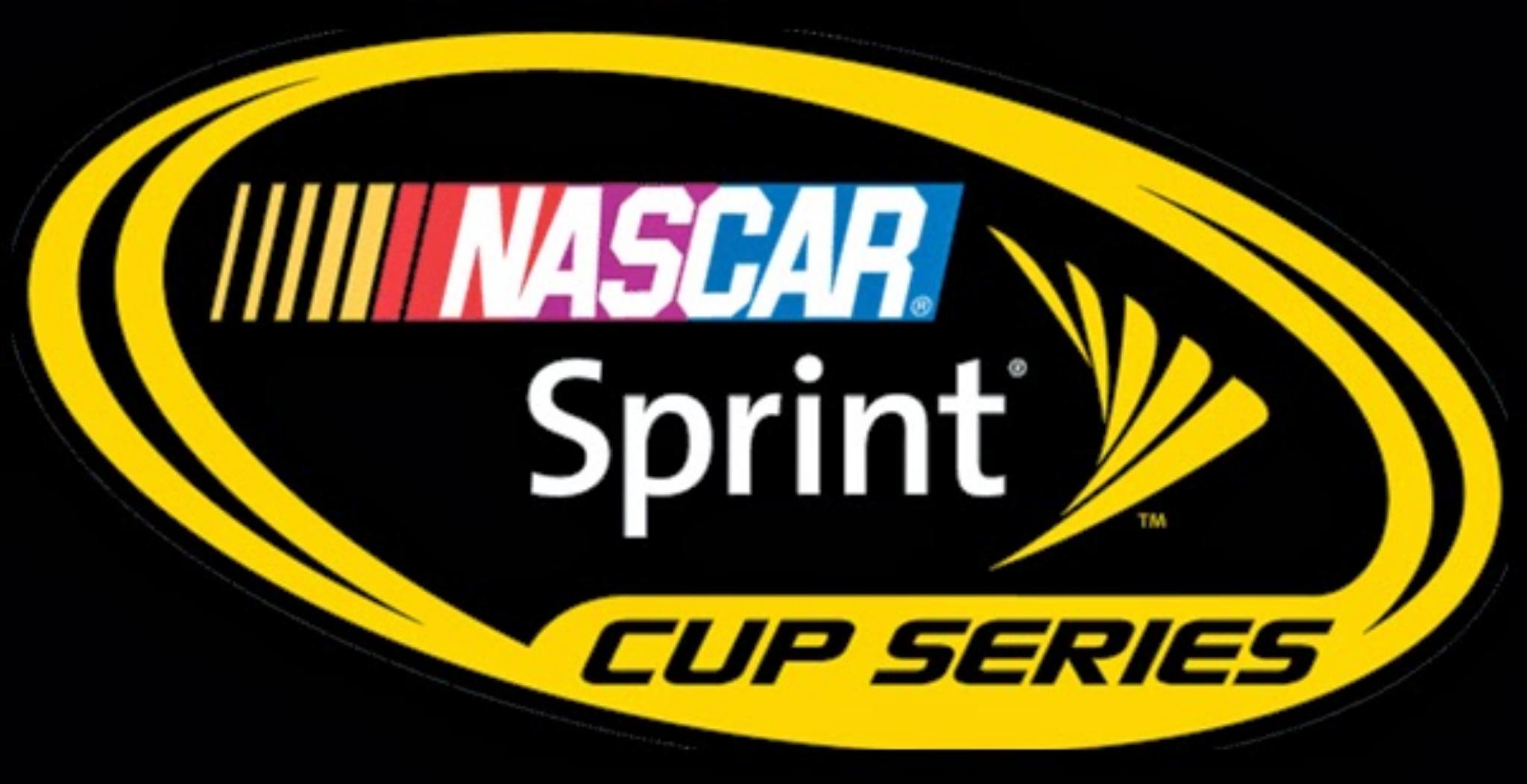 |
| Sprint Cup no more |
After a long a successful run as the title sponsor of NASCAR's premiere series, Sprint finally parted ways with the series at the end of the 2016 Sprint Cup season.
Sprint had come on board in 2008, following a merger with Nextel, who had taken over as the title sponsor of the series in 2004. The combined 13-year sponsorship saw a momentous rise in NASCAR's popularity and growth.
Perhaps more than any other sponsor, partnering with a telecommunications company in an age where smart phones and social media were just coming to the fore was a perfect fit for NASCAR. Having Sprint on board allowed NASCAR more avenues of marketing and exposure – and revenue – than they could have dreamed of. It was a perfect match to help transform NASCAR's image from a southern regional sport into an international sport enterprise, or as one saying goes, "from the backwoods to the boardrooms".
But as the sport grew, so did the expectations, and so did the cost of doing business. At one point, analysts believe Sprint was shelling out as much as $70 MILLION a year, and as Sprint's struggled to keep pace with their rivals in the wireless market, it was clear that days of the "Sprint Cup Series" were numbered. Finally, in December 2014, Sprint announced they were pulling the plug.
As NASCAR says goodbye to Sprint, they welcome in new title sponsor Monster Energy, who now have some pretty big shoes to fill.
HAPPY GOODBYE'S: TONY STEWART'S LAST RIDE
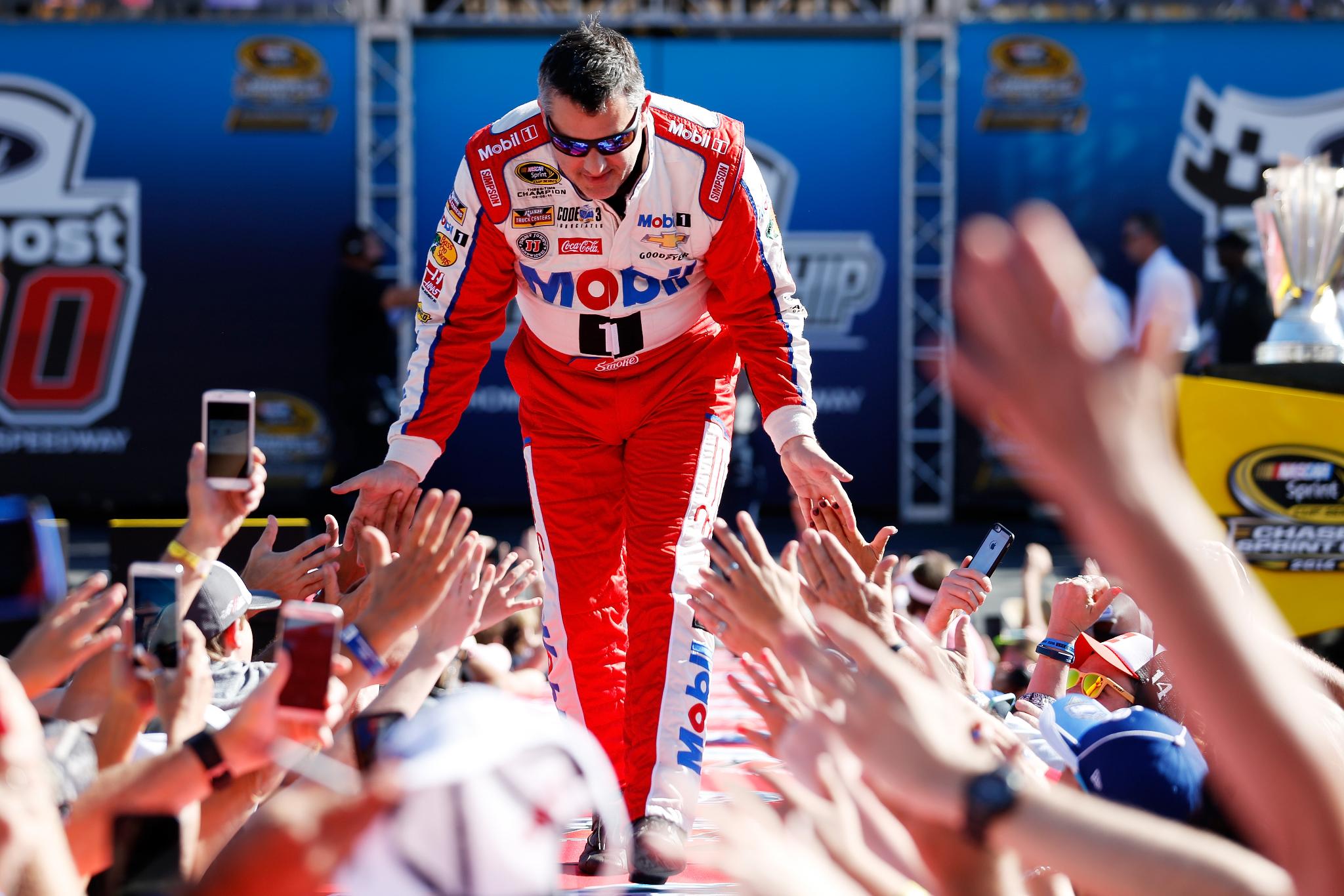 |
| Tony Stewart greets the fans just before his final race at Homestead-Miami Speedway |
| Getty Images |
After 17 seasons, three championships and 49 Sprint Cup victories, Tony Stewart drove his last Sprint Cup race in the season-finale event at Homestead, and although he wasn't running for a title in his final race, he still had one hell of a final season.
Since coming into Sprint Cup in 1999, Stewart's driving skills were never in doubt. He had already torn up the USAC and open-wheel circuits, earning the nickname "Smoke" for his all-out driving style.
Stewart irascible reputation on and off the track was equally as legendary, and wasn't afraid to take on anyone, from four-time champion Jeff Gordon, from former teammate Ryan Newman, even from the media – with whom he had love-hate relationship.
In 2009, Stewart took the plunge into car ownership, partnering with Gene Haas to form Stewart-Haas Racing, and two years later scored his third Sprint Cup title – the first driver/owner to do so since 1992.
In the years that followed, Stewart's fortunes took turn for the worse. First came a broken leg during a sprint car race that caused him to miss the end of the 2013 season. Then, in 2014, an on-track incident during another sprint car race resulted in the death of fellow driver Kevin Ward, Jr.
In 2015, Stewart announced that the 2016 Sprint Cup season would be his last.
Unlike Gordon's retirement year before, there was not as much pomp and circumstance this time around with Stewart, and that's exactly the way Stewart wanted it. But Stewart still wanted to go out the way Gordon did – running for a title in his final event.
At the beginning of the season, it didn't look like Stewart was going to race at all, after injuring his back in an off-road accident back in January. The incident put him on the sidelines for the first eight races of the season, but much like Kyle Busch's season in 2015, NASCAR granted Stewart a medical waiver to allow him to make the Chase – if he could win a race and climb into the top 30 in points.
Stewart did his part – winning in typical Smoke fashion at Sonoma to score a spot in the Chase and finishing 27th in points. Stewart's last ride was unfolding just how he wanted it to.
Unfortunately, the Chase didn't go the way Stewart wanted to -three-straight finishes outside the top ten eliminated him in the first round. There would be no riding into the sunset with a fourth title for Stewart.
Despite hanging up his helmet, Stewart will still be around as a car owner, still willing to go toe to toe with anyone in the garage, and maybe, hopefully, if one of his cars manages to pull into Victory Lane, he'll get another chance to spar with the media.
We wouldn't want to have it any other way.
